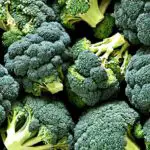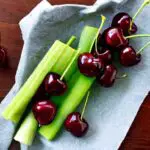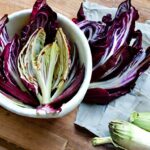Chicory and endive are both types of leafy green vegetables that belong to the Compositae family. While they are closely related, there are a few key differences between the two that are important to understand. Chicory and endive can be used in a variety of dishes, and are both low in calories and a good source of fiber and nutrients, making them a healthy addition to any diet.
In this post, we will discuss the differences between chicory and endive, including their appearance, growing conditions, flavor, and nutritional content.
What is Chicory Lettuce?
Chicory lettuce is a type of leafy green vegetable that belongs to the Compositae family. It is closely related to other types of chicory, such as radicchio and endive, but has a slightly milder flavor and a more tender texture. (See also Is Chicory the Same as Radicchio?)
Chicory lettuce is often used in salads or as a base for appetizers, and can also be grilled, roasted, or sautéed as a side dish.
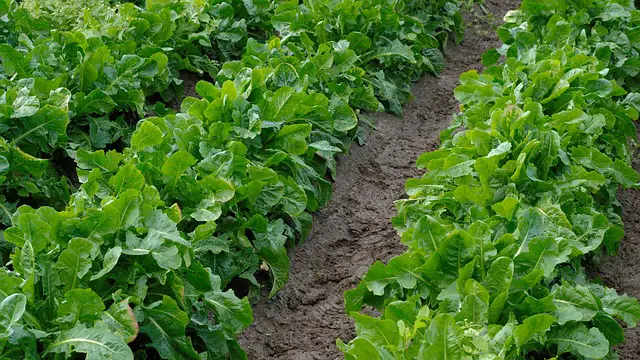
What is Belguim Endive?
Belgium endive, also known as Belgian endive or witloof, is a type of leafy green vegetable that belongs to the Compositae family. It is closely related to other types of endive, such as curly endive and escarole, but has a distinctive appearance and flavor. Belgium endive is native to Belgium, and is known for its mild and slightly sweet flavor and delicate and tender texture.
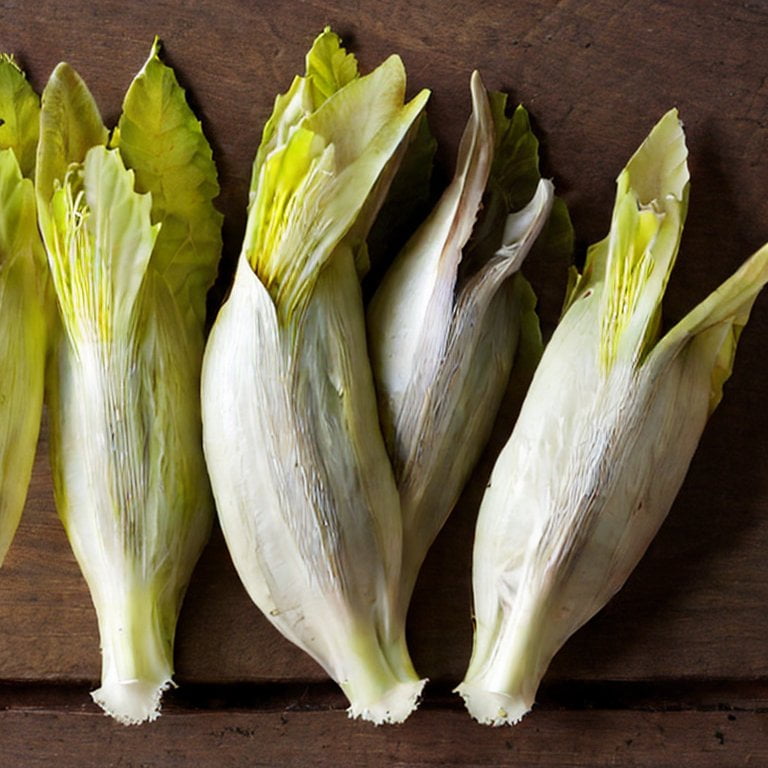
Chicory vs Endive
Chicory and endive are both types of leafy green vegetables that belong to the Compositae family. While they are closely related, there are a few key differences between the two that are important to understand.
Overview
Chicory and endive are both types of leafy green vegetables that belong to the Compositae family. While they are closely related, there are a few key differences between chicory and endive:
- Appearance: Chicory has a long, narrow stem and dark green leaves that are slightly bitter in taste. Endive has a short, round stem and long, pale green or white leaves that are more delicate and less bitter than chicory.
- Growing conditions: Chicory is grown outdoors in the ground, while endive is grown in a controlled environment, such as in a greenhouse.
- Flavor: Chicory has a slightly bitter flavor, while endive has a more mild and slightly sweet flavor.
- Nutritional content: Both chicory and endive are rich in nutrients, including vitamins A, C, and K, as well as folate, potassium, and manganese. However, endive tends to have slightly more nutrients than chicory, particularly in terms of vitamin C and folate.
Both chicory and endive can be eaten raw or cooked, and can be used in a variety of dishes, such as salads, soups, and sandwiches. They are both low in calories and can be a good source of fiber and nutrients, making them a healthy addition to any diet.
Appearance
First, let’s take a look at the appearance of chicory and endive. Chicory has a long, narrow stem and dark green leaves that are slightly bitter in taste. The leaves of chicory are thick and slightly waxy, and have a slightly crunchy texture.
Endive, on the other hand, has a short, round stem and long, pale green or white leaves that are more delicate and less bitter than chicory. The color and texture of the leaves can vary depending on the type of endive, with some varieties having more yellow or red tones and a more wavy or curly texture.
Overall, the appearance of chicory and endive can vary depending on the variety and growing conditions, but in general, chicory has a long, narrow stem and dark green leaves, while endive has a short, round stem and pale green or white leaves.
Growing Conditions
Another key difference between chicory and endive is their growing conditions. Chicory is grown outdoors in the ground, while endive is grown in a controlled environment, such as in a greenhouse.
Chicory is a hardy plant that is native to Europe, although it is now grown in other parts of the world as well. It grows best in well-drained soil in a sunny location, and is usually planted in the spring or fall. Chicory is a relatively easy plant to grow, and is relatively resistant to pests and diseases.
Endive, on the other hand, is a more delicate plant that requires more controlled growing conditions. It is usually grown in a greenhouse or other controlled environment, where the temperature, humidity, and other factors can be carefully regulated. Endive is a slower-growing plant than chicory and requires a longer growing season. It is also more sensitive to pests and diseases than chicory, and may require the use of pesticides or other protective measures to prevent damage.
The different growing conditions of chicory and endive can affect their flavor and texture. Chicory has a slightly bitter flavor and a tougher texture, while endive has a milder and slightly sweet flavor and a more delicate and tender texture. The growing conditions of endive also contribute to its more delicate and tender texture compared to chicory.
Taste
Chicory tends to have a slightly bitter flavor, while endive has a more mild and slightly sweet flavor. The growing conditions of the endive also contribute to its more delicate and tender texture compared to chicory.
The flavor of chicory is often described as slightly bitter, with a slightly crunchy texture. It is often used in salads or as a base for appetizers, and can be balanced out with the addition of other ingredients, such as fruit or dressing. Chicory can also be grilled, roasted, or sautéed as a side dish, and its slightly bitter flavor pairs well with rich, flavorful ingredients such as bacon or blue cheese.
Endive, on the other hand, has a more mild and slightly sweet flavor, with a delicate and tender texture. It is often used as a base for appetizers or as a garnish for soups or other dishes. Endive’s mild and slightly sweet flavor pairs well with mild or sweet ingredients, such as cheese or fruit.
Overall, the flavor of chicory and endive can be a matter of personal preference, and whether you prefer the slightly bitter flavor of chicory or the mild and slightly sweet flavor of endive will depend on your taste preferences. Both chicory and endive are low in calories and a good source of fiber and nutrients, making them a healthy addition to any diet.
Nutritional Value
Both chicory and endive are rich in nutrients, including vitamins A, C, and K, as well as folate, potassium, and manganese. They are also low in calories, making them a good choice for those looking to maintain a healthy weight. However, endive tends to have slightly more nutrients than chicory, particularly in terms of vitamin C and folate.
In terms of fiber content, both chicory and endive are good sources of fiber, with about 2 grams of fiber per cup. Fiber is an important nutrient that can help to support digestive health and reduce the risk of constipation. It can also help to lower cholesterol levels and regulate blood sugar levels, making it an important nutrient for overall health.
Both chicory and endive are also good sources of antioxidants, which can help to protect against the negative effects of free radicals in the body. Antioxidants can help to reduce the risk of chronic diseases such as cancer and heart disease, and may also have anti-inflammatory effects that can help to reduce the risk of certain health conditions.
Overall, both chicory and endive are low in calories and a good source of fiber and nutrients, making them a healthy addition to any diet. Whether you prefer the slightly bitter flavor of chicory or the mild and slightly sweet flavor of endive, these leafy green vegetables can be a delicious and nutritious addition to your meals.
Uses
Both chicory and endive can be eaten raw or cooked, and can be used in a variety of dishes. They are often used in salads, either on their own or mixed with other leafy greens, and can also be used in soups, sandwiches, and other dishes.
Chicory is often used in salads or as a base for appetizers, and can also be grilled, roasted, or sautéed as a side dish. Its slightly bitter flavor pairs well with rich, flavorful ingredients such as bacon or blue cheese, and it can be balanced out with the addition of other ingredients, such as fruit or dressing. Chicory is also sometimes used as a coffee substitute, as the roots of the plant can be roasted and ground to create a caffeine-free coffee alternative.
Endive, on the other hand, is often used as a base for appetizers or as a garnish for soups or other dishes. Its mild and slightly sweet flavor pairs well with mild or sweet ingredients, such as cheese or fruit, and it can be used raw or cooked. Endive is also sometimes used in salads or as a garnish for other dishes, and its delicate and tender texture makes it a good choice for dishes where a crunchy texture is not desired.
Despite their many similarities, chicory and endive do have some key differences that are important to consider when using them in your cooking. Chicory has a slightly bitter flavor and a tougher texture than endive, and it is often used in salads or as a base for appetizers. Endive, with its mild and slightly sweet flavor and tender texture, is often used as a base for appetizers or as a garnish for soups or other dishes.
Looking for a way to use both chicory and endive together? See our recipe: Chicory & Endive Salad Recipe
Benefits
In addition to their use in culinary dishes, both chicory and endive have a number of potential health benefits. Chicory is a good source of fiber, which can help to support digestive health and reduce the risk of constipation. It is also a good source of antioxidants, which can help to protect against the negative effects of free radicals in the body. Endive is also high in fiber and antioxidants, and it is a good source of vitamin C, which can help to support the immune system.
Overall, both chicory and endive are low in calories and a good source of fiber and nutrients, making them a healthy addition to any diet. Whether you prefer the slightly bitter flavor of chicory or the mild and slightly sweet flavor of endive, these leafy green vegetables can be a delicious and nutritious addition to your meals.
Final Thoughts
In conclusion, chicory and endive are both types of leafy green vegetables that belong to the Compositae family. While they are closely related, there are a few key differences between the two, including their appearance, growing conditions, flavor, and nutritional content.
Chicory has a long, narrow stem and dark green leaves that are slightly bitter in taste, while endive has a short, round stem and long, pale green or white leaves that are more delicate and less bitter.
Chicory is grown outdoors in the ground, while endive is grown in a controlled environment, such as a greenhouse.
Both chicory and endive are low in calories and a good source of fiber and nutrients, making them a healthy addition to any diet.
They can be eaten raw or cooked, and can be used in a variety of dishes, such as salads, soups, and sandwiches. Whether you prefer the slightly bitter flavor of chicory or the mild and slightly sweet flavor of endive, these leafy green vegetables can be a delicious and nutritious addition to your meals.
Lance has been passionate about the plant-based diet and we have been following a whole food plant-based diet for over 5 years. We focus on health, natural healing, weight management, animal rights, and the health of the planet and environment by focusing on whole plant-based foods and sustainable practices.
Learn more at the About Me page and follow on social media at the links below.


